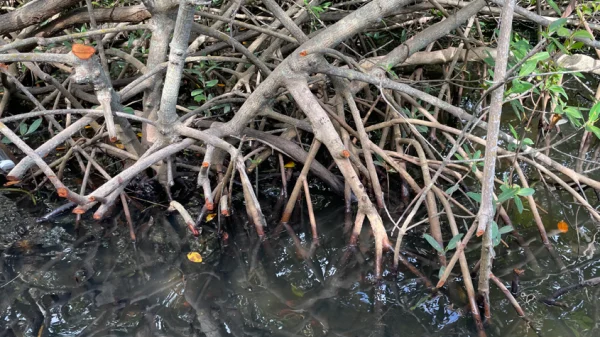
These unique trees play crucial roles protecting and supporting the communities, wildlife, and environment around them
Even if you are not a native Floridian, you've likely seen mangroves around Hillsborough County. If you looked more closely, it's likely that you noticed there is something very different about these trees.
The first giveaway: They grow in saltwater. Mangroves manage this by filtering out up to 90% of the salt in the water entering their roots. This allows the trees to thrive in water up to 100 times saltier than most other plants can tolerate.
The second: They have an almost alien-looking root system. This complex root system visually sets mangroves apart. It also is what makes them indispensable for the local environment.
While, up close, mangroves may look like they belong on another planet, the reality is that they couldn't be better suited for exactly where they are. The plants have adapted to thrive in harsh conditions, including saltwater, unstable soil and sand, and low-oxygen environments. In fact, some types of mangroves have specialized roots that grow downward for anchoring in waterlogged earth, as well as upward to absorb oxygen directly from the air. The intricate systems evolved to thrive above the water line as an additional way to help the trees breathe. These unique adaptations benefit more than the mangroves themselves, they also support their surrounding ecosystem.
Life among the mangroves
It is nearly impossible to walk or row through mangroves without seeing an abundance of wildlife. Many birds, including egrets, herons, and roseate spoonbills, can be found roosting and foraging among the groves.
Below the water's surface, tangles of roots provide the perfect nursery and feeding grounds for numerous types of fish. Turtles, crabs, and snakes, among various other animals, also live within the exposed and submerged root systems. Their presence attracts predators that eat the trees' inhabitants, including dolphins, alligators, and larger fish.
Protecting land, water, and air
It would be wrong, though, to think mangroves are only benefiting wild animals. These trees also help protect everything and everyone inland by reducing erosion. Their complex root systems stabilize shorelines and prevent damage from tidal surges. They can also reduce the impacts of flooding and wind during extreme weather.
Mangrove roots also act as natural filters to water runoff. Contaminants like fertilizer, pesticides, and sediment can get trapped in the intricate root systems and breakdown before entering waterways. By filtering nitrates and phosphates from runoff, the mangrove thickets help purify the surrounding water and decrease the chances of algae blooms, like red tide.

Perhaps most impressive of all, mangroves have an amazing ability to store carbon. Many don't know that mangroves are able to hold three to four times more carbon dioxide than the forests found on land. This is referred to as "blue carbon," which is gas stored underwater in marine and coastal ecosystems. To put this into perspective, one square mile of mangroves can contain as much carbon as the annual emissions of 90,000 cars.
Where to see mangroves in Hillsborough County
Mangroves can be found along the shorelines of several Hillsborough County parks. E.G. Simmons Conservation Park was developed from 258 acres of native mangroves and contains open land areas and intertwined waterways. The park also includes 200 acres of mangrove swamp that has been reserved as a bird and wildlife sanctuary, perfect for birdwatching.
Upper Tampa Bay Conservation Park is home to the Bobcat Trail, which features a mangrove-lined boardwalk along the Double Branch Creek. For those willing to paddle, canoes and kayaks can be rented for exploring mangrove-lined channels.
Mangrove tunnels and mangrove islands can be enjoyed at Cockroach Bay Nature Preserve. Paddlers can access the marked Horseshoe Crab and Snook Canoe Trails by canoe or kayak. This pristine aquatic preserve is home to acres of mangroves which provide food and shelter for numerous marine creatures.
For more information about Hillsborough County's parks, visit Find a Park. You may find it helpful to use the search filter to identify parks based on specific amenities, including "kayak, "camping," "fishing," and more.

